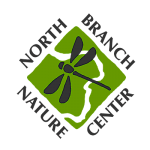Online Courses with NBNC
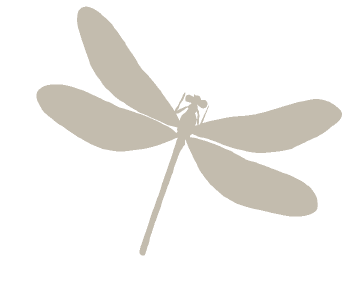
Pursue your naturalist education in a virtual format with our online courses. Discover, learn and explore the diversity of life near you with a new slate of online courses offered by North Branch Nature Center. Each course, taught by an expert biologist, naturalist, or artist, combines online lectures and readings with your own independent study outdoors.
About Our Online Courses
Upcoming and Ongoing Online Courses
These are courses that have the option of enrolling in live videoconference sessions. Recordings of all live sessions are available to all who are unable to attend or who do not purchase live session access.
On-Demand Online Courses
Live videoconference sessions are not available in On Demand offerings because the initial live season has finished or is full. Recordings of all previous live sessions are available to all who enroll On Demand. These courses can be taken at any time. (Click each course to expand)
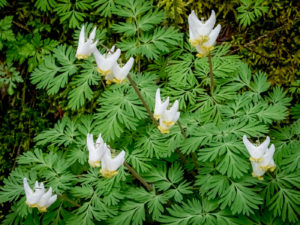 Wild leeks, trillium, spring beauty: each spring brings an explosion of wildflowers to rich Northeastern forests. This course will equip you with tools to identify the plants in our spring flora and an ecological understanding of their place on the landscape. Topics will range from etymology of the spring flora to the potential effects of climate change on spring ephemerals and their pollinators.
Wild leeks, trillium, spring beauty: each spring brings an explosion of wildflowers to rich Northeastern forests. This course will equip you with tools to identify the plants in our spring flora and an ecological understanding of their place on the landscape. Topics will range from etymology of the spring flora to the potential effects of climate change on spring ephemerals and their pollinators.
Unit 1: Vernal Bloomers and Where to Find Them
Who are our spring ephemerals? And what shapes their distribution on the landscape? We’ll begin with an introduction to the spring flora through a big-picture lens, starting with bedrock and soils to explain patterns in the spring flora. This unit will equip you with the ecological tools (both computer- and field-based) to find the richest spring ephemeral spots around, with the goal of preparing you to observe and identify species in the field.
Unit 2: The Life-History of Spring Ephemerals
The fleeting, delicate appearance of spring ephemerals belies their rugged ability to withstand the harsh conditions of early spring. In this unit, we will take a look at the adaptations that allow spring ephemerals to complete most of their life cycle in the weeks following snowmelt. We’ll explore what spring ephemerals do during the three remaining seasons, and we’ll delve into their strategies for pollination and seed dispersal.
Unit 3: Unconventional Ephemerals and the Future of the Spring Flora
In this unit we’ll get to know some forgotten spring ephemerals of the Northeast, from rare swamp shrubs to a floodplain annual whose seeds germinate beneath the snow. We’ll then learn about some of the threats to vernal bloomers and take a look at Vermont conservation efforts to save the rich natural communities that our spring ephemerals call home.
About the Instructor
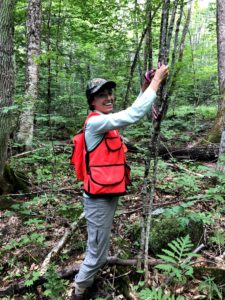 Grace is an ecologist based in Montpelier. She works as a Wetland Scientist with the engineering consulting firm Dubois & King, where she conducts wetland delineations, rare plant inventories, and natural resource assessments across New England. Grace holds a Master's Degree from the Field Naturalist program at the University of Vermont and a B.S. in Botany from Connecticut College. She has taught field ecology for the Vermont Master Naturalist Program and the Vermont Law School, and has worked as a botanist in Arizona, Wyoming, and Maine.
Grace is an ecologist based in Montpelier. She works as a Wetland Scientist with the engineering consulting firm Dubois & King, where she conducts wetland delineations, rare plant inventories, and natural resource assessments across New England. Grace holds a Master's Degree from the Field Naturalist program at the University of Vermont and a B.S. in Botany from Connecticut College. She has taught field ecology for the Vermont Master Naturalist Program and the Vermont Law School, and has worked as a botanist in Arizona, Wyoming, and Maine.
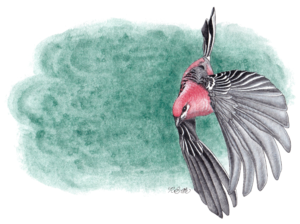 Observing nature has inspired many artistic flights of imagination. This course will use nature study through observational drawing to learn about a selection of familiar animals, from birds to beetles. From that foundation, we will follow in the footsteps of scientific illustrators and storytellers to invent our own reconstructions of vanished animals like the dinosaurs or our own versions of folk animals like the jackalope. Along the way we will cover field sketching, adding color to drawings, watercolor gradients, and more. Learn to fuel your imagination with your love of nature!
Observing nature has inspired many artistic flights of imagination. This course will use nature study through observational drawing to learn about a selection of familiar animals, from birds to beetles. From that foundation, we will follow in the footsteps of scientific illustrators and storytellers to invent our own reconstructions of vanished animals like the dinosaurs or our own versions of folk animals like the jackalope. Along the way we will cover field sketching, adding color to drawings, watercolor gradients, and more. Learn to fuel your imagination with your love of nature!
Unit 1 - Taking Flight: Birds
We start our nature study by observing birds both on and off the page. We will look closely at feathers and spend time observing our favorite birds. We will move on to using our observations to inform imaginative bird art. This unit will also focus on building strong observational drawing and field sketching skills, working primarily in graphite and color pencil.
Unit 2 - Diving In
We continue our nature journey by looking at fish. We will observe fish through drawing and learn to approach the challenge of drawing moving subjects. We will use our observations to inform imaginative art about fish. We will continue adding color to field sketches, introducing watercolor.
Unit 3- Buzzing On: Beetles
Beetles show an amazing diversity of shapes, sizes, colors, and patterns, making them great fun to study as an artist. We will observe pinned beetles through drawing and discuss the decision process for including different amounts of detail to achieve different styles in a final illustration. We will make imaginative beetle art based on our observational work. We will continue working with paint in this unit.
Unit 4- Galloping Off
In this final unit we will spend time with the animals closest to ourselves: mammals! We will look closely at fur and color patterns in mammals, considering different approaches to represent fur. We will end our nature art journey by imagining fantastical mammals. By this unit we will have tried several media and will consider ways to mix or integrate media in a single piece.
About the Instructor
Rachel Mirus is a teaching artist and science writer. Her art interests focus on drawing and painting from nature following the traditions of natural history illustration. She has written on subjects ranging from climate change to gene therapy. Originally trained in molecular biology, she has worked in research labs and museums across the country. She has taught at the California Academy of Sciences, the Harvard Museum of Natural History, and in Vermont at the Montshire and Fairbanks Museums. Locally, she teaches for MakerSphere, Radiate Art Space, the Waterbury Grange, and leads nature study for the CBMS climbing club. More information can be found on her website: Rachel’s Cybercabinet of Natural Curiosities.
**The live Zoom sessions are FULL for this ongoing course. Recordings of these sessions, as well as all other content will be posted as they become available**
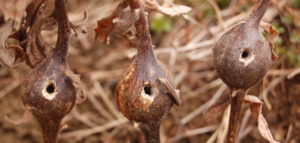 You probably know that monarchs fly south for the winter, and that honeybees huddle together to keep each other warm. But what about the thousands of other bugs all around us that don’t get any press? Have you ever wondered how they make it through the coldest, darkest part of the year? In this course we will explore the different strategies insects and other arthropods have for surviving the winter. Each species has one life stage that overwinters, which may be the adult, egg, larva/nymph, or pupa. Each unit will focus on one of these life stages, including examples of species that can be found out in the open all winter as well as some that are hidden from view.
You probably know that monarchs fly south for the winter, and that honeybees huddle together to keep each other warm. But what about the thousands of other bugs all around us that don’t get any press? Have you ever wondered how they make it through the coldest, darkest part of the year? In this course we will explore the different strategies insects and other arthropods have for surviving the winter. Each species has one life stage that overwinters, which may be the adult, egg, larva/nymph, or pupa. Each unit will focus on one of these life stages, including examples of species that can be found out in the open all winter as well as some that are hidden from view.
Unit 1: Overwintering Adults (Released Jan 3)
The first unit will cover species that overwinter as adults. A few of these avoid the harsh northern winter by migrating; many ride out the winter hiding under logs and in other secluded places; still others remain active and can be seen trudging over the snow.
Unit 2: Eggs (Released Jan 17)
The second unit covers species that overwinter as eggs. Some eggs are unlikely to be encountered because they are inserted in vegetation or buried in the ground; others are tiny but can be found in plain sight if you know where to look; and a few are in conspicuous and easily identified masses or cases.
Unit 3: Larvae and Nymphs (Released Jan 31)
As with adults, some overwintering larvae and nymphs are active in plain sight, while others are dormant in hidden places. Some spend the winter months in conspicuous galls or in mines in stems and leaves—in some cases resuming feeding on warmer days.
Unit 4: Pupae (Released Feb 14)
In the final unit we complete the cycle with insects that overwinter as pupae or as prepupal larvae in cocoons, ready to complete their metamorphosis as soon as spring arrives. This category includes solitary bees and wasps in nests constructed by their mothers.
About the Instructor
Charley Eiseman is a naturalist based in western Massachusetts. He has been conducting plant and wildlife surveys and natural resource inventories throughout New England for over 20 years, as well as teaching courses and workshops on interpreting animal tracks and sign (both vertebrate and invertebrate). He holds an MS in Botany (Field Naturalist) from the University of Vermont and a BS in Wildlife and Fisheries Conservation and Management from the University of Massachusetts. Charley is the author of Tracks & Sign of Insects and Other Invertebrates (Stackpole Books, 2010), Leafminers of North America (self-published e-book, 2019), and an insect-themed blog called “BugTracks.” He has also published over 40 scientific papers on insect natural history, including the description of over 60 new species. http://charleyeiseman.com/
**The live Zoom sessions are FULL for this ongoing course. Recordings of these sessions, as well as all other content will be posted as they become available**
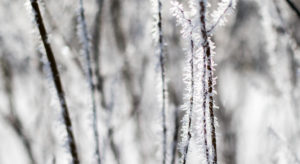
For many in the Northeast, an idyllic winter day might consist of hunkering down next to a wood stove or careening across mountain slopes. But somewhere out there in the snowy woods, our native flora and fauna undergo bizarre transformations, embark on remarkable journeys, and withstand extreme conditions in the hopes of longer days and warmer weather ahead.
This course is designed for those who wish to embrace the cold — to explore, understand, and appreciate the winter world. Students will learn how to read the winter landscape, explore ice age relics clinging to alpine summits, decipher animal tracks, tackle the challenge of winter tree ID, and discuss the implications of Lake Champlain’s warming waters.
It may seem like an eternity before the resurrection of warblers and spring ephemerals. But once we know where to look, there’s much we can learn from the tenacity and resilience of the winter world.
Unit 1 - New England Winters: Past and Present (Unit Released: Dec 8)
From axial tilts and ice ages, to the physical properties of snowflakes, we’ll explore the fundamental forces that have shaped New England’s landscape and established the seasonal patterns that we know today.
A combination of geologic, geographic and climatic factors has placed Vermont at a crossroads — a boundary between the cold-hearty coniferous forests to the north, and the temperate hardwoods to the south. By traveling north through the state, or climbing in elevation, we can go back in time and find relics of New England’s frigid past. By heading south, or decreasing in elevation, we can glimpse our future.
In this unit, we’ll decipher what makes winter in the northeast so special and learn to read the landscape from a deep time perspective. Field exercises will focus on discerning patterns in the landscape — using clues from the past, and observations from the present to see the winter world like never before.
Unit 2 - Plant Survival Strategies (Unit Released: Dec 22)
Winter is a rough time to be rooted in one place. When light becomes scarce, and the threat of snow and ice increases, many of Vermont’s plant species shed their leaves and lay dormant until spring. It’s a delicate calculus — fine-tuned over millennia — resulting in a brilliant color show each autumn. But much of our flora retain their leaves, developing strategies to ward off damage from the elements, and capitalizing on what little light is available.
In this unit, we’ll explore how our plant communities have adapted to deal with snow, ice, wind, and darkness — from the cliffs of Smuggler’s Notch to the shores of Lake Champlain. Field exercises will focus on winter tree identification, winter botany, and plant phenology.
Unit 3 - Animal Survival Strategies: Migration, Hibernation and Resistance (Unit Released: Jan 5)
In response to the stressors associated with long, Vermont winters, our native fauna pull off incredible feats of ingenuity. Turtles hold their breath for months, frogs freeze solid, chickadees alter the size of their brains. Some creatures go through great lengths to avoid winter altogether, embarking on cross-continental journeys.
In this unit we’ll discuss migration, hibernation, and the myriad strategies employed by those creatures who remain active year-round. We’ll look at the physical and chemical processes going on within some of these animals and learn how humans have borrowed some of these tactics to thrive in cold climates. Field assignments will include observing winter bird behavior, and an introduction to animal tracking.
Unit 4 - Humans, Phenology & the Future (Unit Released: Jan 19)
Our winters are getting warmer — growing seasons have become longer, our snowpack has diminished, and Lake Champlain has frozen only twice in the last decade. What are the ecological repercussions? Which species will benefit from milder winters, and which will struggle? How will our natural communities adapt to the new winter world?
In this unit we’ll discuss how humans have adapted to winter climates in the past, we’ll speculate our role for the future, and we’ll discuss the importance of phenology and monitoring. Field assignments will build on those in previous units to establish a yearly phenological calendar.
About the Instructor
Jason Mazurowski is an ecologist, naturalist, and adjunct instructor at the University of Vermont. Most of his work focuses on native bee conservation and pollination ecology, but during the winter months — when flowering plants and flying beasts are harder to come by — he can be found enjoying the peace and quiet of winter in the north woods. Jason has explored snowy summits and boreal biomes across the country from the Rocky Mountains to the Maine Woods. He has led winter expeditions as a dog sled musher in Minnesota’s Boundary Waters, a winter guide in New Mexico’s Sangre de Cristo mountains, and as a teaching assistant for Bernd Heinrich’s immersive Winter Ecology course.
FOR THOSE SEEKING "DRAWING ON CREATIVITY: NATURE ART BEYOND IMAGINATION," PLEASE SEE ABOVE"
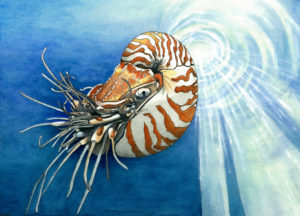 Close observation can inspire wonderful works of imagination. This course will begin with observational drawing, combining careful inquiry with drawing technique to build the keen observation skills foundational for both artists and naturalists. Using example plant and animal groups, we will review growth and body patterns, learning through drawing. We will introduce field sketching, grayscale and color drawing, and watercolor layer technique. The course will culminate with examples and projects in imaginative nature art, launching you into your own nature illustrating journey!
Close observation can inspire wonderful works of imagination. This course will begin with observational drawing, combining careful inquiry with drawing technique to build the keen observation skills foundational for both artists and naturalists. Using example plant and animal groups, we will review growth and body patterns, learning through drawing. We will introduce field sketching, grayscale and color drawing, and watercolor layer technique. The course will culminate with examples and projects in imaginative nature art, launching you into your own nature illustrating journey!
Unit 1: Artist Eyes: observational drawing
Unit 2: Patterns in Nature: bodies
Unit 3: Patterns in Nature: botany
Unit 4: Beyond Observation: inspiring imagination
About the Instructor
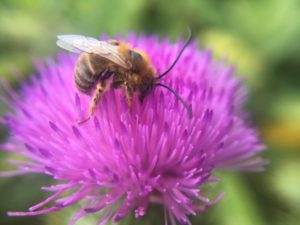 With over 300 species in Vermont, bees are so much more than the source of honey. This course will introduce you to a mindblowing diversity of shapes, sizes, and life histories found in almost any habitat. While most species can only be identified by using a microscope, we will focus on the species and groups that are relatively distinctive to the naked eye. By the end of the course, participants should be able to identify most bees to the genus level, which is certainly not a common skill! Guided field challenges will be based on the flowers and bees currently active. With so little known about the distribution of some of these species, it's definitely possible to find new state records right in your own backyard!
With over 300 species in Vermont, bees are so much more than the source of honey. This course will introduce you to a mindblowing diversity of shapes, sizes, and life histories found in almost any habitat. While most species can only be identified by using a microscope, we will focus on the species and groups that are relatively distinctive to the naked eye. By the end of the course, participants should be able to identify most bees to the genus level, which is certainly not a common skill! Guided field challenges will be based on the flowers and bees currently active. With so little known about the distribution of some of these species, it's definitely possible to find new state records right in your own backyard!
Unit 1 - What is a bee?
It's a simple question that most people can’t answer. The simple explanation is that bees are hymenoptera with branched hairs, but instead of dwelling on the technical details, we will briefly explore each of the 35 genera (in 5 families) found in Vermont. We will also touch on some of the look-alikes that are frequently mistaken for bees. Emphasis will be given to field marks that are visible in photos and gestalt-based identification. Before setting off to explore their local bees, participants will receive several techniques and tips for bee watching with a camera, net, smartphone, binoculars, and the naked eye.
Unit 2 - Bumblebee ID and natural history
Bumblebees are among the charismatic megafauna of the insect world. Large, colorful, and abundant, they are a great gateway into entomology. Vermont’s 17 species are relatively well known and several resources exist to make species level identification possible for newly trained participants. Late July and early August is the peak in both diversity and abundance, so nearly any natural area should yield several species.
Unit 3 - Cleptoparasites and parasitoids
Everyone loves a good parasite story, and the bee world is full of them! From mind-control flies to cleptoparasitic sweat bees, there are insects in at least 4 different orders that have figured out how to survive off the hard work of pollen-collecting bees. Some of the cleptoparasites are among the world's rarest bees, but others are abundant and easily found once you know what to look for. With patience and a little luck, you might get to see a Thick-headed Fly lay an egg inside a flying bumblebee, or even the mysterious Twisted-wing Insects.
Unit 4 - Pollen specialists and conservation issues
Pollinator conservation may be the hottest biology subject (outside epidemiology) right now, and yet there is a significant disconnect between the public impression of saving the bees, and the reality of what is needed to maintain a diverse and resilient pollinator community. The final unit will focus on both pollen specialists and the needs of the majority of bees that don’t benefit from pollinator gardens.
About the Instructor
Spencer began exploring Vermont as an avid young birder with a strange habit of memorizing field guides. About the time he had figured out gulls and fall warblers, Spencer started working as a field technician on the Vermont Bumblebee Atlas through the Vermont Center for Ecostudies. After 8 seasons of bird and bee field work around the country, Spencer is now the Project Coordinator for the VCE’s Wild Bee Survey, a natural (and challenging) extension of the Bumblebee Atlas. This job sends him all over the state in search of rare bees, with rainy days spent with a microscope trying to figure out what a “densely rugose mesopleura” or a “feebly emarginate labral process” look like.
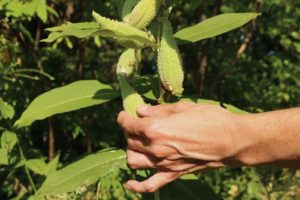 A bounty of wild foods grows just beyond our front doors – ingredients that hold flavors that cannot be experienced elsewhere. It can be intimidating to shop at nature’s grocery and rightfully so. This course seeks to alleviate some of those fears by establishing a sound foundation of identification skills, ethical harvest best practices, unique preparations, and extending the harvest through preservation. Each week we will focus on different species as they ripen through the spring season. Some things, however, are best taught in the field with an expert, so we will stay away from plants with potentially dangerous look-alikes. That being said, there will be plenty of depth to explore with seemingly “simple” plants.
A bounty of wild foods grows just beyond our front doors – ingredients that hold flavors that cannot be experienced elsewhere. It can be intimidating to shop at nature’s grocery and rightfully so. This course seeks to alleviate some of those fears by establishing a sound foundation of identification skills, ethical harvest best practices, unique preparations, and extending the harvest through preservation. Each week we will focus on different species as they ripen through the spring season. Some things, however, are best taught in the field with an expert, so we will stay away from plants with potentially dangerous look-alikes. That being said, there will be plenty of depth to explore with seemingly “simple” plants.
Unit 1: Foraging Basics: Starter Plants, Safety, and Ethics
It is important to know what you are eating. Here we will get you started with a few safe and easy plants and recipes while practicing the basics of how to go about identifying plants correctly and harvesting them in a sustainable way. We’ll take a look at some invasive species that are a great start for filling our larders while helping the environment.
Unit 2: Preparation, Method, and Taste
Techniques such as creating infusions, smoking with barks, clay baking, and cooking with stones all have different effects on flavor and we’ll learn to utilize these methods to raise our wild cooking game to a new level.
Unit 3: Extending the Harvest: Savor the Flavor
Though many wild edible plants have a short season and shelf life, preservation techniques such as creating powders, compound butters, flavored salts and pickling can have you enjoying your harvest well into winter.
Unit 4: Extending the Harvest: The Sweeter Side
We’ll close out with a deep dive into concocting wild jams, jellies, syrups, and flavored sugars. These preservations will then open a floodgate to new desserts and baked goods that will change the way you think about a flower or spruce needle.
About the Instructor
Ken Benton is a NBNC Teacher-Naturalist, forager, and overall outdoorsman with a deeply seeded passion for eating good food. He has been foraging in earnest for over 10 years and focuses on utilizing wild foods in new and creative ways that excite both the palate and imagination.
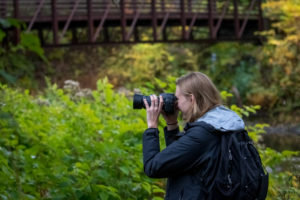 Develop the foundations of a well-rounded nature photographer. We’ll explore composition, artistic technique, exposure, lighting, camera skills, and equipment settings. The perfect course for those curious about f-stops, shutter speeds, and those mysterious buttons on your new camera. Learn how to use your camera to develop a deeper connection with nature, while building the technical skills to dramatically improve your photography.
Develop the foundations of a well-rounded nature photographer. We’ll explore composition, artistic technique, exposure, lighting, camera skills, and equipment settings. The perfect course for those curious about f-stops, shutter speeds, and those mysterious buttons on your new camera. Learn how to use your camera to develop a deeper connection with nature, while building the technical skills to dramatically improve your photography.
Unit 1: The Nature Photographer’s Composition Toolbox
From leading lines to subject placement, thoughtful composition is 90% of a nice photograph. Before we dive into the nitty-gritty, we’ll develop the language for seeing and practicing good composition in nature photography. We’ll analyze the photographs of the masters, and spend some critiquing one another’s work in this unit, and throughout the course.
Unit 2: The Exposure Triangle – Shutter Speed, Aperture, and ISO demystified.
The exposure triangle is to photographers what scales are to musicians. We’ll learn what these three functions do, and how to adjust them to achieve our artistic goals. With moving objects, bright sunlight, dark shadows, and intricate subjects, a fluent command of our exposure is essential to nature photography.
Unit 3: Buttons and Dials – The most important buttons and settings
Many of the bells and whistles on your digital camera are important. Many are not. We’ll explore the shortlist of camera controls that you should be familiar with to succeed as a nature photographer, including autofocus modes, metering, white balance, and more.
Unit 4: Tricks of the trade – lighting, macro, telephoto, and more
There is a long list of challenges unique to photographing nature. We’ll cover the most important of these considerations in a series of mini-tutorials on macro, telephoto, image stabilization, tripod usage, and much more. Tutorials will be provided based on the goals expressed by course participants, and paired with field challenges to practice each topic.
About the instructor
Sean is a wildlife photography guide who has been teaching travelers to better photograph birds, bears, bison for over a decade with the World Wildlife Fund and Natural Habitat Adventures. Sean is an artisan at Burlington's Frog Hollow gallery, and regularly teaches courses in photography and photo editing around the region. Sean owns Green Mountain Exposure, and is NBNC's Staff Naturalist and Director of Natural History Programs.
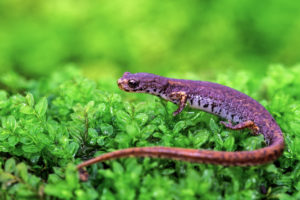 Frogs and salamanders live miraculous lives underwater, underground, and under threat from predators and people. This introductory course will acquaint you with the fascinating amphibians of our woods and wetlands, provide the tools you need to find them, and teach you how to get involved in amphibian conservation. Topics will range from amphibian natural history and ecology, species identification, basic field methods, and conservation.
Frogs and salamanders live miraculous lives underwater, underground, and under threat from predators and people. This introductory course will acquaint you with the fascinating amphibians of our woods and wetlands, provide the tools you need to find them, and teach you how to get involved in amphibian conservation. Topics will range from amphibian natural history and ecology, species identification, basic field methods, and conservation.
Unit 1 - Natural History & Ecology
While frogs and salamanders are familiar to us, many aspects of their complex lives go unobserved; hidden beneath the surface of the water or below the forest floor. We’ll dive in and unearth the mysterious habits of our amphibian neighbors, from tiny salamanders valiantly defending communal nests to frogs that freeze solid and live to croak again.
Unit 2 - Northeast Species Identification
When asked, most folks can name a handful of species in our area: American Bullfrog, Eastern Newt, Spotted Salamander. The majority of the 22 amphibians documented in our state remain largely unknown. We’ll cover all of Vermont’s frog and salamander species, learning frog calls, teasing apart egg masses and differentiating minute larvae.
Unit 3 - Survey & Field Methods
Some amphibians make their presence well known; the din of Spring Peepers is a sure sign of spring for many. Other species are impossible to find without concerted effort and well honed technique. We will learn how to survey a variety of habitats using tools most folks will have ready access to at home. The goal is to prepare students to find amphibians in the field, and we’ll cover everything from data collection to safe handling techniques.
Unit 4 - Conservation & Citizen Science
Both close to home and around the world, many amphibian populations are declining precipitously. In fact, the global rate of extinction is higher for amphibians than almost any other group of organisms. We’ll confront some sobering truths and learn about incredible efforts to turn the tide of species loss. Students will leave the course inspired and empowered to take action here in Vermont through a variety of citizen science efforts.
About the Instructor
Whether it's wading through half frozen swamps in search of salamanders or climbing mountains to find rare and elusive birds, NBNC Teacher-Naturalist Zac Cota is obsessed with discovering the lives of our animal neighbors. Having first started as a citizen scientist before completing undergraduate studies as a field naturalist, he is excited to share his knowledge and enthusiasm for birds and amphibians with just about anyone who will listen.
"In nature, nothing is perfect and everything is perfect.
Trees can be contorted, bent in weird ways, and they're still beautiful.”
—Alice Walker


